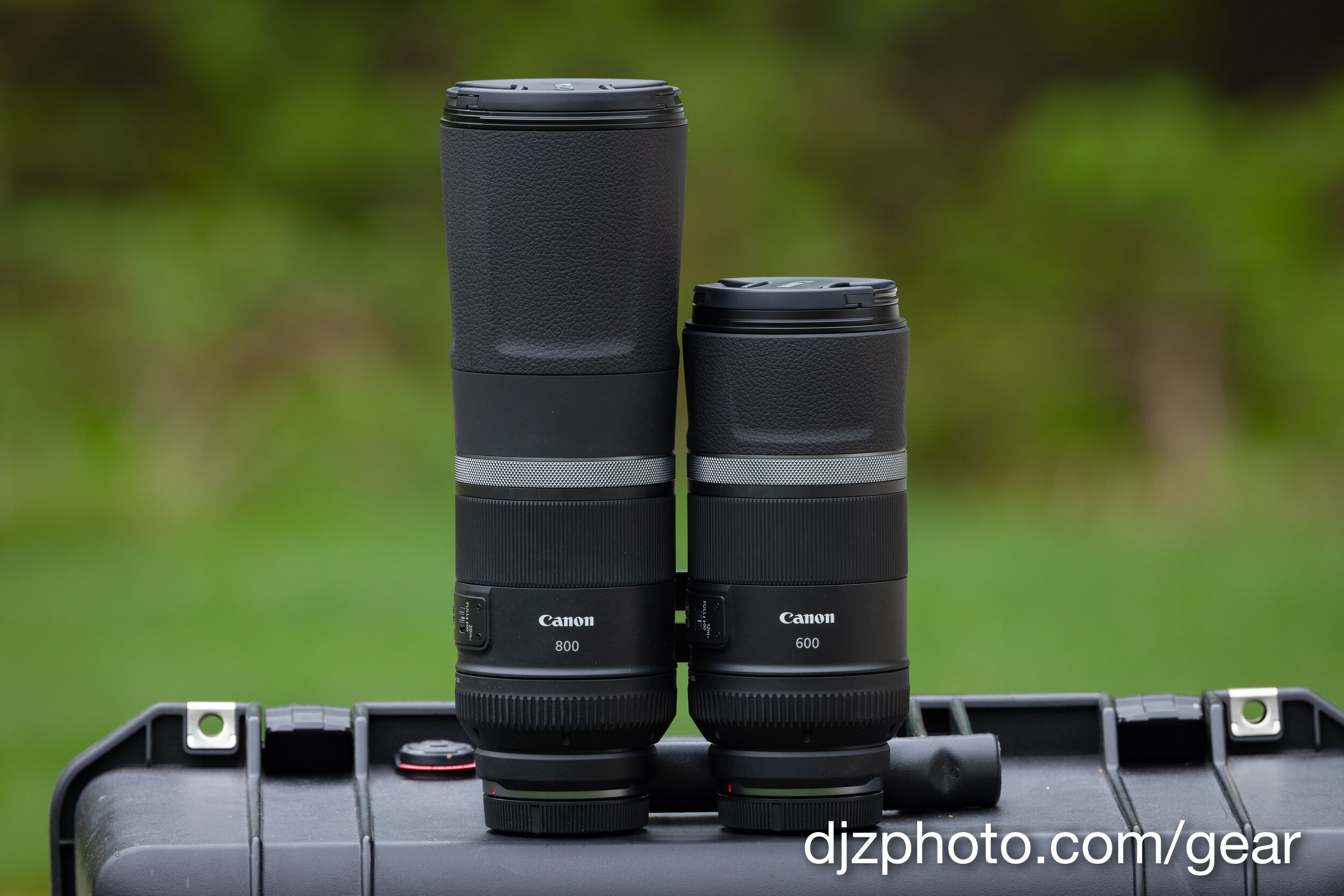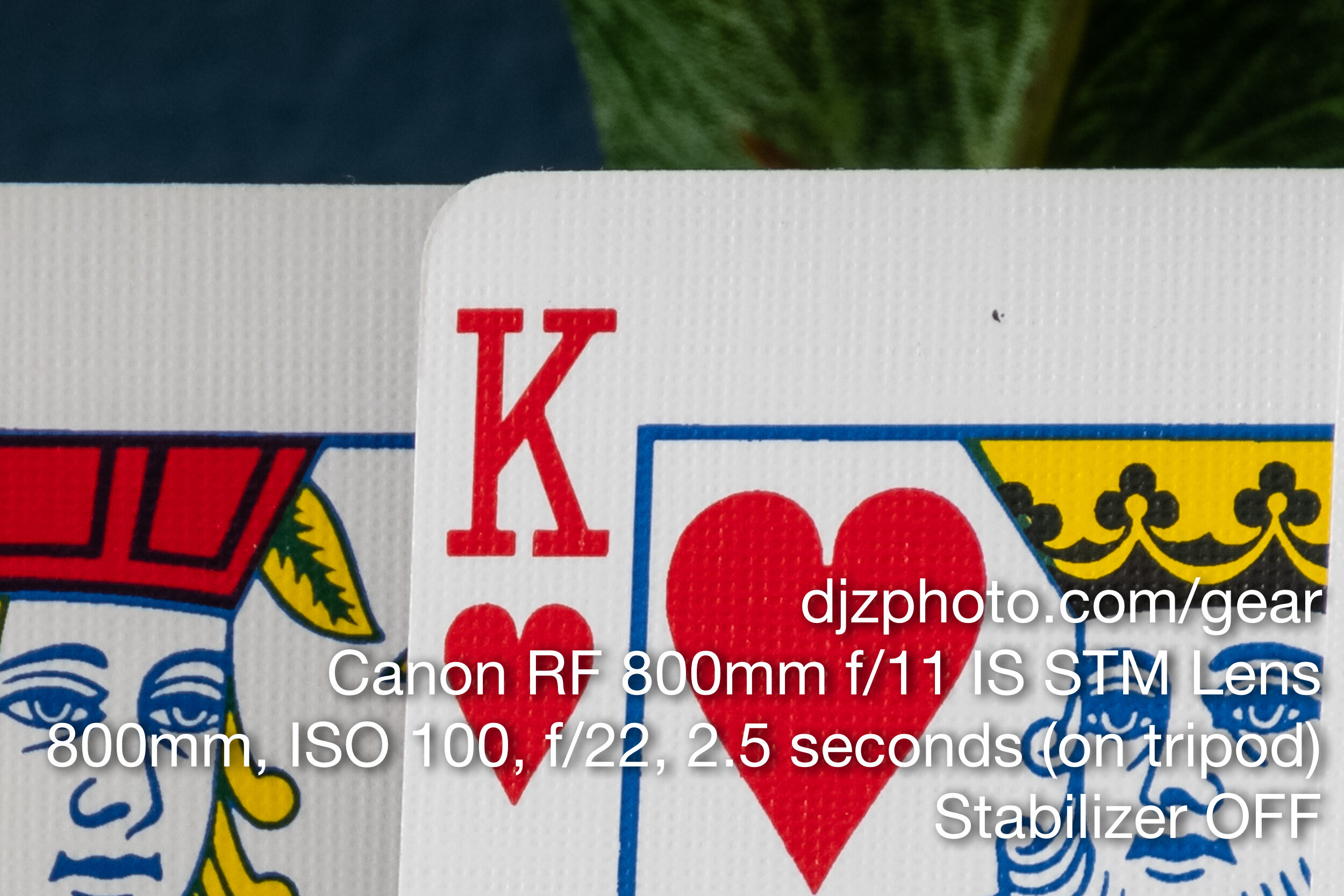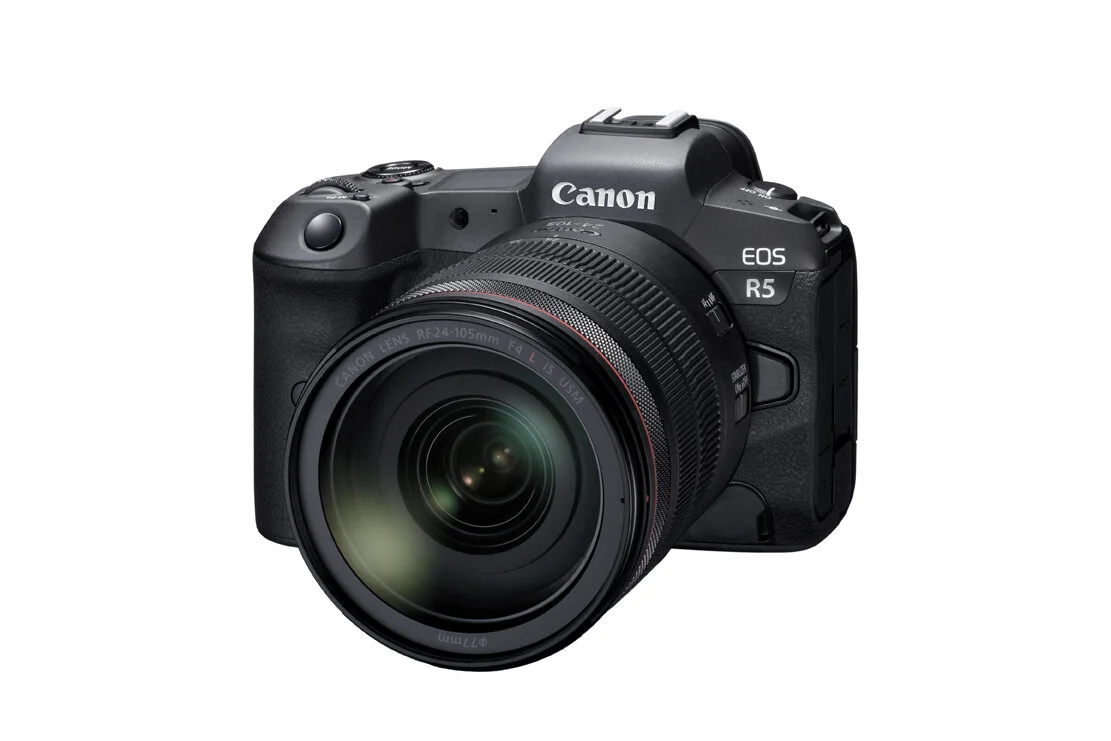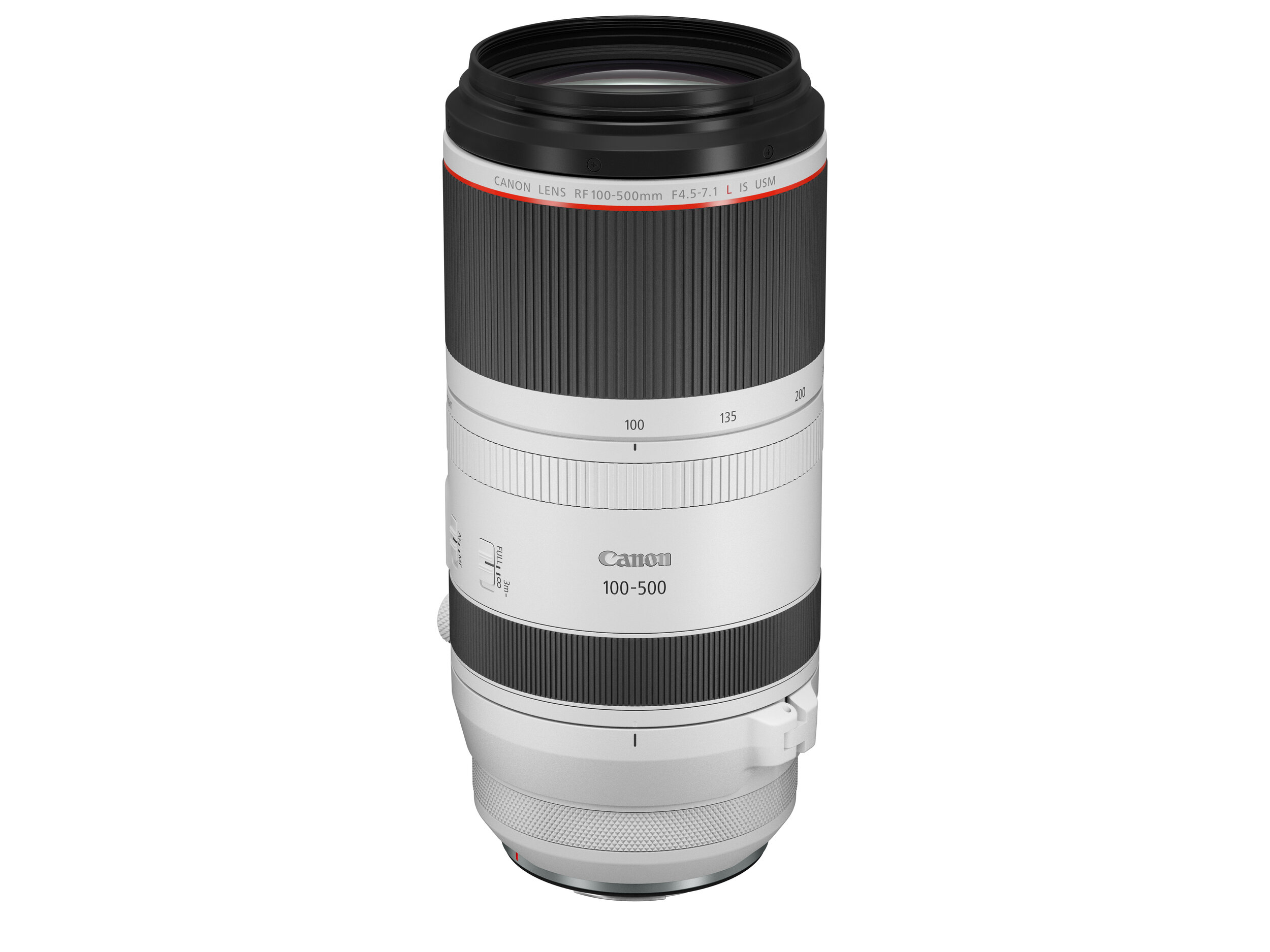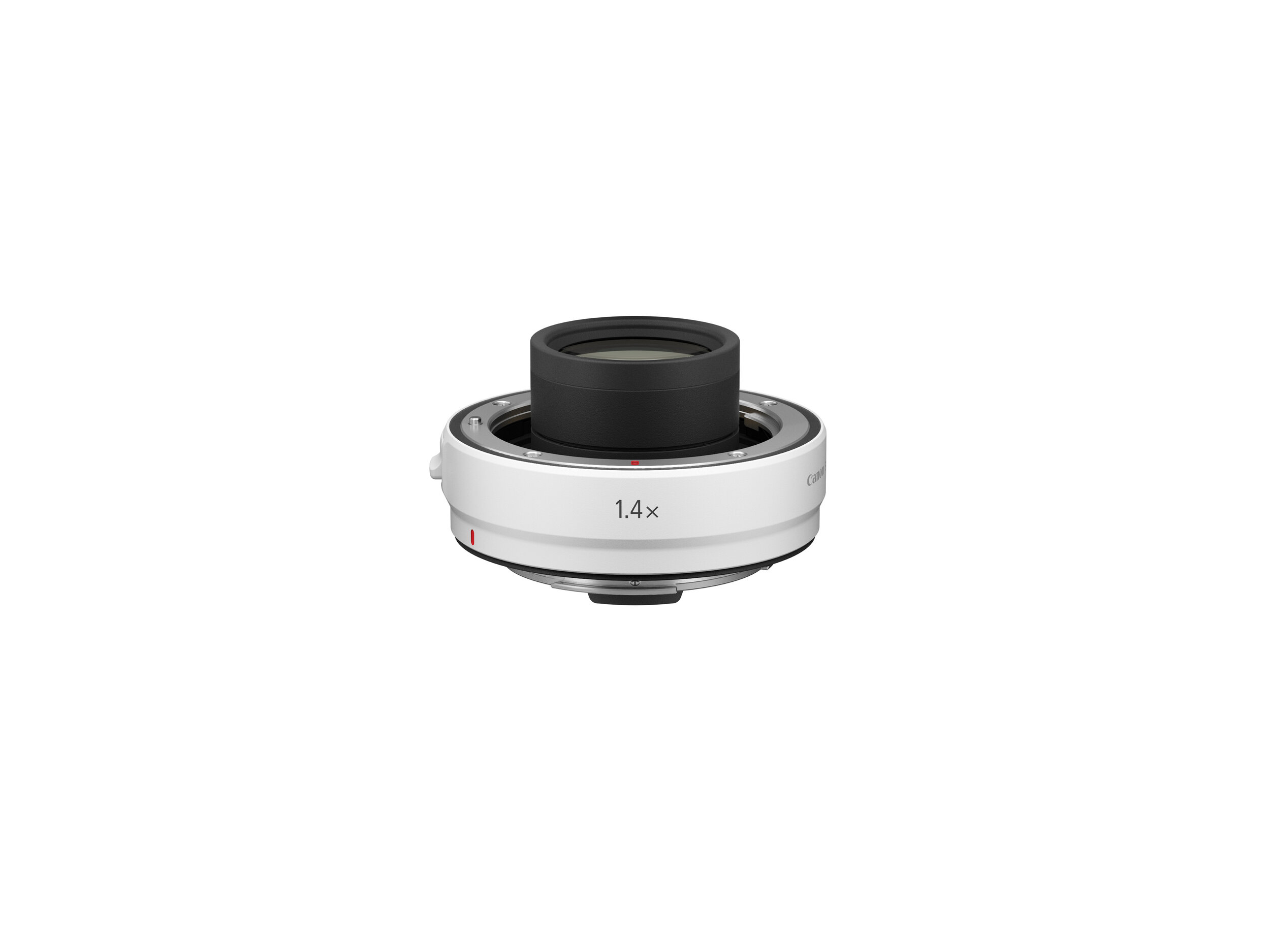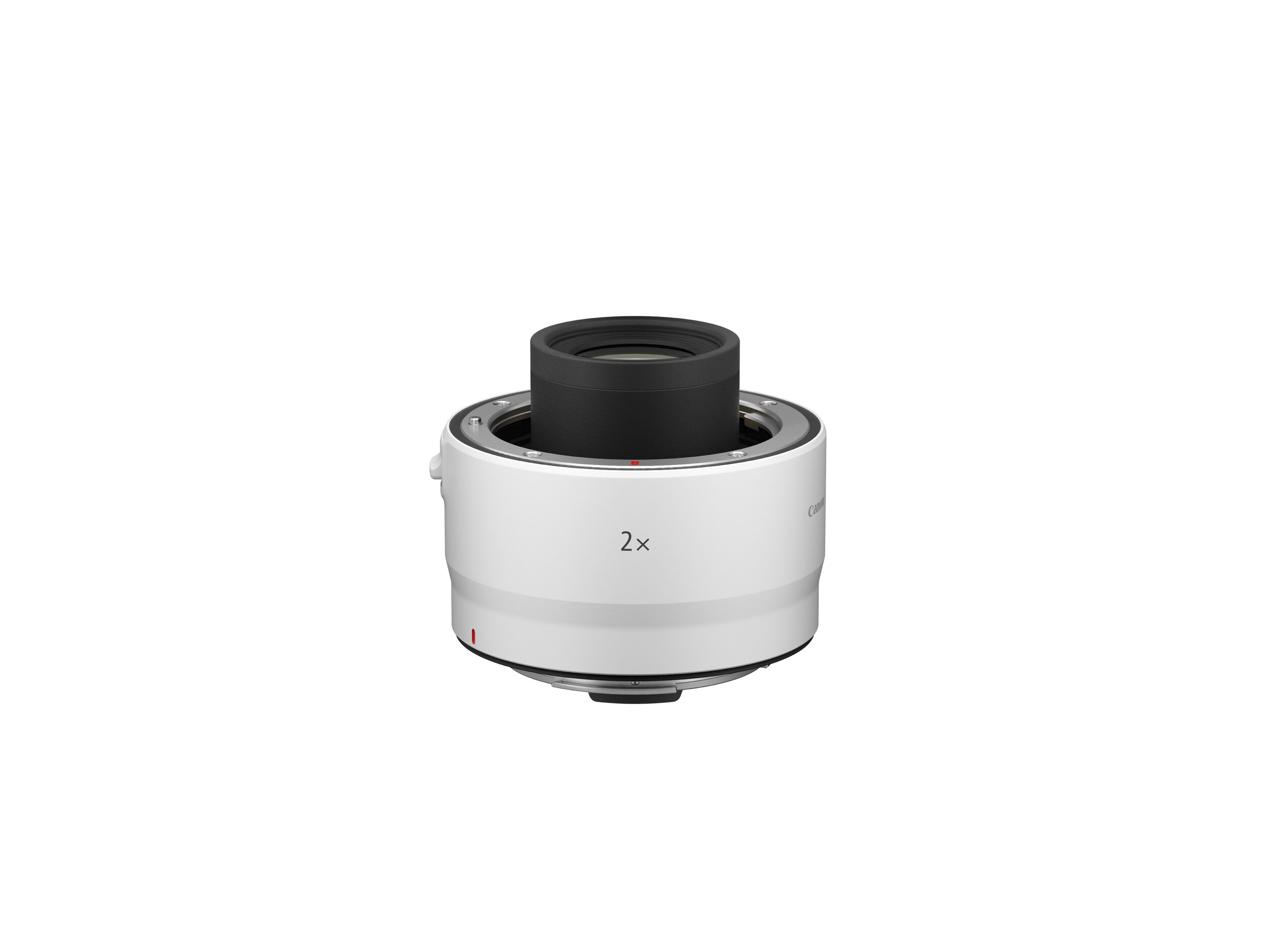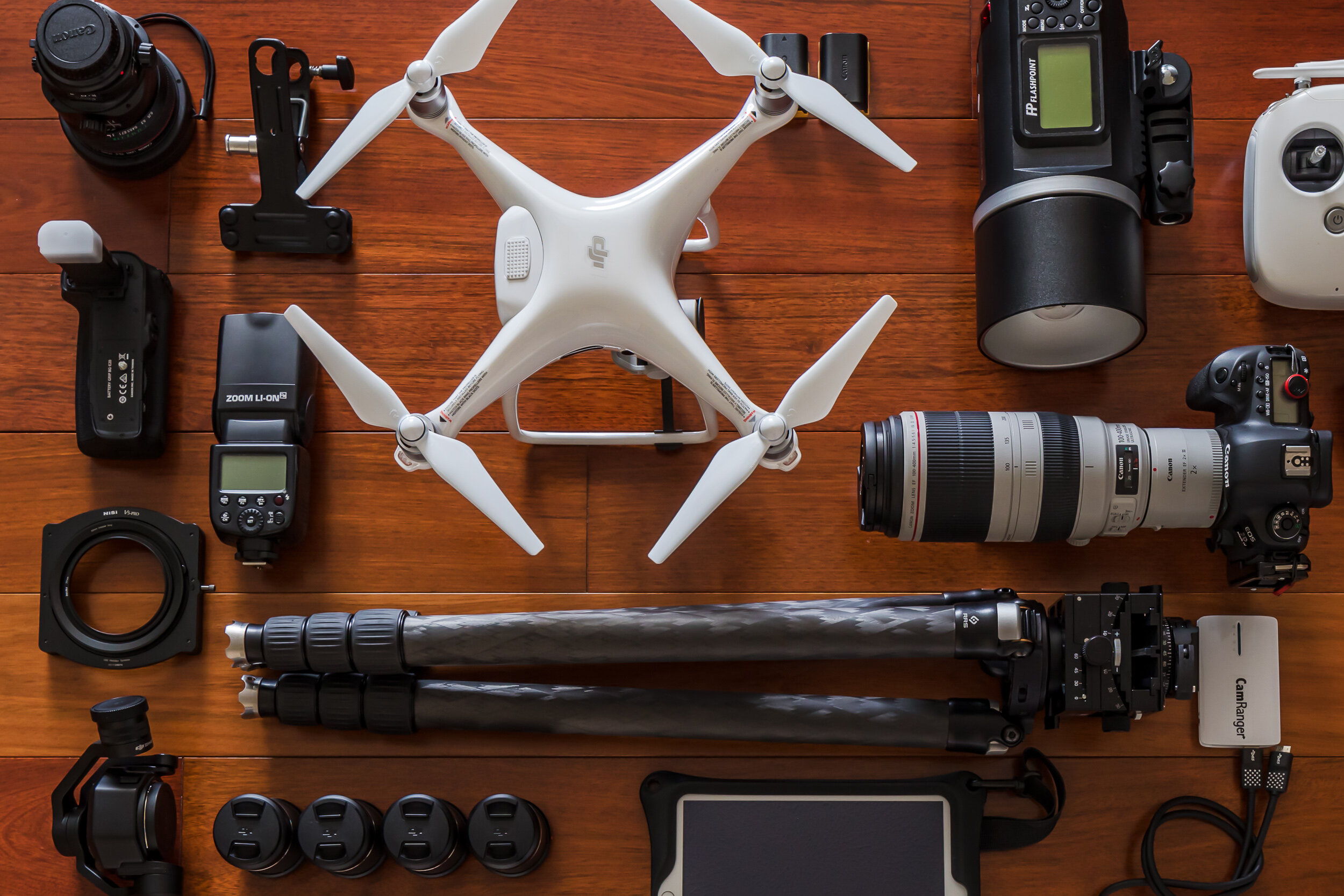
Camera & Drone Gear Blog
Info, Reviews, Comparisons, & News
An In-Depth Review of Canon's RF 600mm & 800mm f/11 IS STM Lenses
Canon raised a lot of eyebrows when they announced the extremely affordable RF 600mm & 800mm f/11 IS STM lenses. “An 800mm lens for $899??? But it’s f/11??? What’s going on here??” Canon has so far been unique in this sub-$1,000 venture, especially considering the 800mm lens. What are the real trade offs with these smaller & cheaper f/11 600mm and 800mm lenses?
Canon raised a lot of eyebrows when they announced the extremely affordable RF 600mm & 800mm f/11 IS STM lenses. “An 800mm lens for $899??? But it’s f/11??? What’s going on here??”
Canon has so far been unique in this sub-$1,000 venture, especially considering the 800mm lens. As far as I can tell from looking at the websites of Sony, Nikon, Panasonic, Sigma, Rokinon & Samyang, the only other major camera or lens manufacturer that actively produces an 800mm lens is Nikon, and it costs over $16,000. Canon’s 800mm f/5.6 lens costs around $13,000. So what are the real trade offs with these smaller & cheaper f/11 600mm and 800mm lenses?
I own both the 600mm and 800mm f/11 IS STM lenses and use them both, but this article looks primarily at the 800mm since it lets me test more extreme focal lengths.
This page contains links to products, so if you find this site useful and use a link to make a purchase, I’ll get a small commission. As an Amazon Associate I earn from qualifying purchases. Thanks!
Can They Really Produce Sharp Images?
I wanted to see if these lenses are sharp, and I started with a very controlled environment that you probably wouldn’t be in whether you’re trying to have fun or make money. I mounted the 800mm f/11 on a tripod indoors, attached a wired remote trigger to my Canon EOS R5, and focused on some playing cards that were about 20 feet away. The distance of 20 feet is important, because 19.69ft is actually the minimum focusing distance for the 800mm f/11 (it’s 14.76ft for the 600mm). I got as close to the cards as I could while still being able to focus on the King’s face. I took one shot with the stabilizer on and one shot with the stabilizer off, both using Electronic 1st curtain shutter. The camera settings were ISO 100, 800mm, f/11, 2.5 seconds. Here are the results of those two shots:
When I looked at the first image on my computer screen (when the stabilizer was off) I had absolutely no complaints about image sharpness. In fact, I was impressed. No one should be complaining about the sharpness of this 800mm lens for the price! I can see more detail in the playing cards from 20 feet away that I would typically notice if I was holding the card in my hand.
The image with the stabilizer turned on showed a little bit of blur. I assumed this would happen because I could see it in the camera’s LCD before I took the shot… the image moved around ever so slightly and constantly, and it is clear that stabilizers in an 800mm lens are not designed for long tripod exposures. I have accidentally left the stabilizer on when using a Canon RF 15-35mm wide angle lenses on a tripod and had no detrimental effects on sharpness, but with these super-telephoto lenses the stabilizer is definitely designed for faster shutter speeds during hand-held shooting.
Here are cropped versions of the above photos with the stabilizer on and off:
You can see in the above cropped images that when the stabilizer is off it is sharp enough to see the tiny fibers on the top edge of the card and the texture of the card itself. But when the stabilizer is on, it is slightly blurry.
Call me crazy, but I wanted to see if the image was still sharp if I threw a Canon Extender RF 2x on the 800mm lens. Since I was already stuck at f/11 with the lens, adding a 2x Extender will cause me to be stuck at f/22! I did an 8 second exposure instead of a 2.5 second exposure. I also moved back about 10 feet in order to keep a few different cards in the frame. Here is the shot from about 30 feet away with a 2x Extender, both uncropped and cropped:
Once again I was impressed! Even at when using a 2x Extender to achieve 1600mm, the image was sharper than I expected. From 30 feet away I can see the tiny fibers on the top edge of the cards, the texture of the cards, and the texture of the fake plant leaf behind the cards.
Thumbs up for Canon’s glass quality & sharpness, for both the lens and extender!
How Good are those Stabilizers? Hand-Holding Shots for Stationary Objects
One of the biggest challenges with 600mm or 800mm lenses is camera shake. The tiniest movement or vibration can cause your image to turn out blurry. Even the shutter or mirror in your camera can cause the image to be blurry, which is why I used 1st curtain electronic shutter for the longer tripod shots and electronic shutter mode for shots quicker than 0.5 seconds. Very fast shutter speeds and lens stabilizers can overcome vibration from a camera’s mirror or shutter, but since I am trying to specifically test the stabilizers in these lenses at different shutter speeds I wanted to eliminate that potential cause of vibrations.
When you are hand-holding such a long lens for the first time, you might be surprised how hard it is to keep it still! The longer the lens, the more the subject will appear to be jumping around. This is why there is a “rule” about keeping your shutter speed about twice as fast as your focal length when you are shooting with your camera in your hands rather than a tripod. For example, if your lens is 50mm you’d want to use shutter speeds at least as fast as 1/100th of a second. If your lens is 15mm, you should only need a shutter speed of 1/30th sec. Does this rule still apply at 800mm? Let’s find out!
For the next test I found a couple of frogs playing a game, and payed them $20 to sit still for a few minutes (just kidding). I took at least 10 shots at each shutter speed with the stabilizer on and off. I used autofocus to focus on the left frog’s eye before each set of shots. Even though I was stuck at f/11 the background is blurred nicely, due to the fact that I was only about 20 feet away at 800mm. I adjusted exposures to make all the images somewhat similar, because in some shots I had slowed down the shutter speed without being able to change the aperture or lower the ISO further. I also had to move the frogs into the shade once I was testing slower shutter speeds.
For each set of photos, I had the Canon EOS R5 set to continuous shooting with the electronic shutter, which means it was firing at 20 shots per second. I just held down the shutter button until I got at least 10 photos. One thing to note on these non-stabilized shots is how much the photos jump around between shots, despite the photos only being 1/20th of a second apart! It’s a good indication of how hard it is to hold an 800mm lens steady.
My first test set was shot at 800mm, ISO 1000, f/11, 1/1600th sec, stabilizer off. When I looked at the 1/1600th sec shots with no stabilizer, it looks like the “rule” of using a shutter speed twice as fast as your focal length generally held up. I had 17 photos at this shutter speed and they all looked nice and sharp.
Now let’s see how a 1/800th sec. shutter speed did at 800mm since that “breaks the rule:”
Initially when looking at the 1/800th sec. shots on the computer I thought I “perceived” motion blur, but when I zoomed in I couldn’t necessarily prove it. So it seems like 1/800th of a sec. still produces usable images at 800mm, or have such a minor loss of sharpness that most people wouldn’t notice it.
At shutter speeds of 1/200th and 1/400th of a second it is hard to see the motion blur when looking at the whole images, but most of the images lose sharpness at these slower speeds. Here are four of the images at 1/200th:
Here are a couple crops to show the blur up close. One of these shots at 1/200th is fairly sharp, and the other shows a bit of blur:
At 1/100th of a second I took 13 shots with the stabilizer off, and only 1 lucky photo out of 13 was sharp. Once I got down to 1/50th of a second all 12 images I took had noticeable motion blur, and most of the photos were basically unusable:
To summarize the results of the non-stabilized test shots at 800mm:
1/1600th of a second produced all sharp images
1/800th of a second produced mostly sharp images, maybe a little blur creeping in on some
1/400th of a second produced a little motion blur on most images
1/200th of a second produced more motion blur than 1/400th, but still had a couple usable images
1/100th of a second produced 12 blurry images, but I had 1 lucky sharp one in there.
1/50th of a second produced 100% blurry images
So ultimately, the shutter speed that is double your focal length would be the safe choice if you were only taking one photo of a stationary object with the stabilizer off. If you take 20 shots per second like I did in this test, you could get away with lower shutter speeds than the rule suggests if your subject isn’t moving at all and maybe get a couple lucky sharp ones in there. =)
Now let’s see how far we can push shutter speeds with the stabilizer enabled. I am doing these tests with a Canon EOS R5, which has in-body image stabilization. This means if you were to put the same lens on an EOS R which does not have in-body image stabilization, you might not want to push the shutter speeds as low.
Let’s continue with shutter speeds of 1/50th of a second, but this time with image stabilization enabled:
When looking through these 1/50th sec. shots on my computer the one that had the most blur was the first image, captured right after I pushed the shutter button. I could have had a steadier first image if I had used the camera’s 2 second timer, and if I was trying to take a steady single shot that’s definitely what I would do. But generally speaking the stabilizer allowed me to shoot at 1/50th of a second. Also notice how the composition doesn’t jump around much at all! The stabilizer is making up for my slight hand movements that were clearly present in the non-stabilized galleries earlier on. Taking shots with the stabilizer on at 1/100th resulted in all sharp images as well, including the first shot as I was pushing the shutter button.
I ended up taking 12 images in less than a second with a shutter speed of 1/25th, and the photos ranged from being sharp to having a minor amount of blur. Here is a crop of a couple photos at 1/25th from one of the sharper photos and one of the blurriest photos:
So using 1/25th sec. shutter speed for stationary subjects is fair game with this lens, especially when using continuous shooting (aka burst shooting) drive modes and an electronic shutter. As quick as the R5 shoots photos you will probably end up with a couple sharp photos in less than 1 second of shooting.
My test results at 1/13th sec. brings me to the end of our shutter speed stabilization tests, because all of the photos had a little motion blur. The amount of blur was very consistent at 1/13th, and the photos weren’t necessarily unusable but they definitely weren’t perfectly sharp.
To summarize the stabilizer tests with the Canon RF 800mm f/11 IS STM Lens:
Most or all photos will be sharp when shooting at 1/50th of a second or faster when the stabilizer is on and your subject is still (no animals or people)
You can get away with shooting stationary subjects at 1/25th of a second if you are burst/continuous shooting (hit or miss sharpness)
1/13th second exposures and slower will probably have minor motion blur in all images
You would probably never want or need to be at ISO 100 with a 600mm or 800mm lens like I was in these tests, because most subjects you photograph are going to be moving so you’ll want very fast shutter speeds. Even flowers move in the wind. If you are using these lenses you will probably be using higher ISO’s because subjects move across the frame quickly at super-telephoto focal lengths. The stabilizers are great, but they don’t stabilize the motion of your subject… they only reduce the effect of movement created by your hands holding the camera.
One Interesting Scenario where the RF 600mm and RF 800mm f/11 Lenses Differ Significantly vs. the Canon RF 100-500mm f/4.5-7.1L IS USM
One interesting thing I’ve discovered with these lenses is the way they handle bright light sources in low-light scenes. To illustrate the issue, I took the same shot with the Canon RF 800mm f/11 lens and the Canon RF 100-500 f/4.5-7.1L Lens with an RF 2x Extender attached to the 100-500 at a lighthouse at night. Both shots were taken back to back with the same camera with a tripod in the same location with the same white balance settings:
Since the RF 800mm f/11 has no aperture blades it renders the glow from lightbulbs along the catwalk as round circles of light, whereas the RF 100-500 f/4.5-7.1L captures the lights as stars with 18 points since that lens has 9 aperture blades. Canon’s user manual for the RF 600mm & 800mm states:
“ … Color flare might appear around the light source depending on shooting conditions…” and “For scenes where a light source is inside the screen, colored flare may occasionally appear as a halo of light around the light source.”
Most photographers will probably prefer the look of lenses with aperture blades when rendering light bulbs in night scenes over bladeless Diffractive Optics lenses like the RF 600mm and 800mm. But most people will not be using these lenses at night, so that shouldn’t be a deal breaker.
Sample Gallery - Photographing Live Animals at 1600mm
For the live animal sample gallery I wanted to take things to the extreme and see what kind of ISO’s and shutter speeds I would be using if I was hand-holding 1600mm, so I attached the Canon RF 2x Extender to the RF 800mm f/11 and took my Canon EOS R5 camera to the zoo. I found the easiest way to walk around photographing animals was to simply put the ISO on Auto with a range of up to 12,800 and control shutter speed as desired. If the camera got tricked by the lighting situation I adjusted settings as needed. I used Animal Eye Autofocus the whole time, which usually made focusing a breeze.
Here is the sample gallery with settings embedded in the photos. None of these photos are cropped at all:
Since this was my first time walking around shooting live animals handheld at 1600mm & f/22 I was slightly concerned about using ISO’s ranging from 3200 to 12,800. I assumed that the noise would be distracting enough to make the photos unusable, but I was impressed with how well the Canon EOS R5 handled it. I had the noise reduction slider in Adobe Lightroom typically between 25 and 40, and that seemed to be enough to make the noise acceptable at these high ISO’s. The combination of high ISO’s and a little of Adobe’s noise reduction allowed me to maintain fast shutter speeds for motion-stopping photos even if the animal was moving.
Initially I didn’t consider trying to photograph animals if there was a chain link fence between me and the animal, but then I tried with the mountain lion and found that the chainlink fence was so out of focus that it didn’t really show up in the image (though it may have impacted sharpness slightly). I also tried it with the tiger and was again fascinated at how the fence was so out of focus it didn’t appear to block the tiger.
These lenses will be a lot of fun for people who want to get into wildlife photography for less than $900, especially if you have a Canon EOS R5, EOS R6 or newer. I imagine this experiment would have been a little more challenging with the Canon EOS R or RP, as those cameras have older sensors and don’t have Animal Eye AF.
Keep in mind I was photographing animals in broad daylight on a beautiful, sunny day. If it was darker outside I would expect autofocus to be slower and less accurate at f/22, and I would have to make some sacrifices with ISO or shutter speed with increased risk of noise or motion blur. For that reason I would imagine it could be difficult to shoot wildlife in the woods with these lenses, but that is an experiment for another day!
Conclusion
Pros of Canon’s 600mm & 800mm f/11 IS Lenses
Glass is surprisingly sharp considering the price & focal length
Stabilizers allow for hand-held shooting
Extremely affordable
Great for learning the challenges of super-telephoto photography
Lots of fun for bird & wildlife enthusiasts who don’t want to drop $13,000+ on a lens
You can add an RF extender for extreme telephoto focal lengths
Autofocus works great in the bright daylight
Cons of Canon’s 600mm & 800mm f/11 IS Lenses
You’re stuck at f/11 (can’t go lower or higher)
Diffractive optics with no aperture blades means lightbulbs at night could flare and won’t have pointy stars like people may prefer
No lens hood or case included
No rotation collar for using camera in vertical position on a tripod (you’d have to put some type of L-bracket on it)
No weather sealing like the higher-end Canon “L” lenses (don’t use outside if there’s a possibility of precipitation)
Products Mentioned in this Article
Canon EOS R5 vs 5D Mark IV: Canon has Upped their Game (And these Underexposed Photos)
When I switched from the 6D to the 5D Mark IV, I did notice a slight improvement in dynamic range and shadow handling. But this is a major advancement for Canon who had been previously been dabbling with small, incremental improvements here and there. Going from the EOS 5D Mark IV to the EOS R5 is not a small, incremental improvement… it’s like a whole new generation of technology.
I had been using a Canon EOS 5D Mark IV since 2017 and a Canon EOS 6D for a few years before that. I am very familiar with Canon’s limitations in terms of how far you can lift the shadows in scenes with a wide dynamic range and how much you can crank up the exposure if an image is underexposed. From night scenes to architectural interiors, it became second nature to understand how many exposures I would need to take at various shutter speeds in order to capture both highlights and shadows. The 5D Mark IV was a slight improvement over the 6D, but I had also become aware of how Sony’s sensors were better at handling shadows and high dynamic range scenes. Some Canon shooters were even starting to make the switch or contemplating the move. I had numerous Canon lenses, but I was seriously considering switching to Sony. It seemed like a pain to sell all my lenses and switch brands, but wouldn’t the sensor improvements be worth it?
Then Canon announced the R5.
Me: “OK, fine…I’ll at least try the R5 before I mess around with switching camera brands.”
So, has Canon improved their camera bodies’ ability to lift shadows and increase exposure with underexposed images? Is there going to be a noticeable difference compared to the 5D Mark IV?
Let’s take a look!
This page contains links to products, so if you find this site useful and use a link to make a purchase, I’ll get a small commission. As an Amazon Associate I earn from qualifying purchases. Thanks!
I decided to subject the Canon EOS 5D Mark IV and the Canon EOS R5 to a painful test… taking a photo at night and then cranking the exposure to +5 in Adobe Lightroom.
For the below comparison, I placed each camera on a tripod and used the exact same Canon EF 16-35 f/2.8L III lens (using the Canon Mount Adapter EF-EOS R with the R5) and took a picture of a lakeside deck at night. Both of these photos were taken after astronomical twilight and before moonrise, so the night was as dark as it was going to get.
Each photo was 8 seconds at 24mm, with an aperture of 7.1 and ISO set to 400.
And now it's time for the painful part. Let’s see what happens when we push these RAW images to Exposure +5 in Adobe Lightroom and reduce the Highlights to -100.
Wow! I was amazed when I saw the results. You can see the sky on the 5D Mark IV image has a greenish tint with purple bands going through it and lots of color noise, whereas the R5 somehow managed to pull what appears to be the correct colors in the sky with less color noise and no noticeable banding. Cranking the exposure to +5 on a night scene was clearly too great of a feat to pull off for the 5D Mark IV, but the R5 was able to handle it. We will take a look at some crops from this image a bit later, but first…
Random but Semi-Relevant Sidetrack
It’s pretty rare to have a legitimate reason to crank the exposure to +5, but the banding issue on the 5D Mark IV happened to me once when I was only at Exposure +2 while editing a real estate image in an unusual situation in 2018.
This is what it felt like to be in a dark basement with no electricity trying to produce a real estate image with my 5D Mark IV.
Is this a scene from Lord of the Rings in the mines of Moria? No…I was by myself shooting a foreclosed house with no electricity in the middle of nowhere, and I was in the pitch black basement with only a tiny window reminding me that daylight would once again shine on my face. Because I was in a hurry to get out of there before I woke the balrog, I did a run-’n-gun 12-image exposure bracket at ISO 400 that included a 30 second image. I also fired a separate speedlight shot at the window to control the hot spot. At a quick glance I thought the 30 second image would be enough to give me all the information I would need from the dark areas, but as you can see in the images below, I ended up with a horizontal green band that went across the center of the image and affected the shadows (shown just above the white line).
Canon 5D Mark IV, 30 seconds, ISO 400, f/7.1:
Here is a closer look at the green band from the 30 second exposure in two crops of the brightened RAW file (in the first crop image, the band only appears in the darkest areas on the left):
This situation was obviously extreme and unusual, and I basically made a mistake because I was in a hurry to get out of there. If I was being my normal meticulous self, I could have opened the aperture to f/4 or flipped the camera to bulb mode and done a 2-minute shot to make sure I had quality shadows. But this is one mistake I made that the R5 could probably handle, whereas the 5D Mark IV caused me to spend extra time in Photoshop fixing the green band. After blending multiple ambient exposures with my speedlight shot and muting the green band using Photoshop, here is the final image:
After blending multiple ambient exposures with a speedlight shot towards the window and fixing the green band, this was the final image.
Sidetrack Over - Back to the Night Scene
Back to the original night scene… here is a crop of the sky from each camera so we can see the difference close up.
You can see small banding/stripes with the 5D Mark IV in addition to the larger purple bands, but the R5 image is fairly smooth with better color and no noticeable banding, even in these crops. The sky in the 5D Mark IV image is essentially unusable. The R5 shows some noise as a result of raising the exposure to +5, but if you look at the whole image earlier in the article, it becomes apparent that you could make a mistake that significantly underexposes a photo but still end up with a usable photo with the R5. The R5 photo has some noise, but it is not catastrophic. This is a giant leap in performance over any of Canon’s previous photo camera bodies.
Here is another crop from the +5 exposure crank:
Again we see the 5D Mark IV pickup green in the deep shadows below the white board, but the R5 manages to have more detail, less noise, and better color.
Below is a crop of one of the hot spots, so we can see how the highlights are handled:
These hotspot areas are not very exciting to look at (in fact, it hurts my brain), but we can actually see that there is more detail around the edge of the hot spot in the R5 image. The R5 allows you to see the shape of the light spread more than the 5D Mark IV, and we can see more of the wood texture near the left edge of the highlight by the screw. Not very exciting, but it’s nice to see that highlight handling also appears to be slightly improved.
Another interesting observation is how much better the noise looks around the hotspot above the railing. The R5’s higher resolution sensor makes the noisy pixels smaller, which contributes to an overall smoother appearance.
Another Exposure Crank, Just for Fun
I did an architectural photoshoot recently that included twilight photos, and one of the cameras I had setup was the Canon EOS R5. Just for fun, I took an underexposed photo and cranked it to +4.35 in Adobe Lightroom. Here are the original and modified photos, along with what the final image looked like after blending multiple ambient exposures:
This is so much better than any of Canon’s previous camera bodies! Although I like the look of the final image better after spending time blending multiple exposures, look at how close to the final image I was able to come by simply cranking the exposure to +4.35 and dropping highlights to -100! The original photo makes you think no information was captured in the grass, trees, bushes, or other seemingly lost areas. But somehow the information is there, with a minor but acceptable noise penalty, and you can bring it out the completely dark areas with some simple sliders in Lightroom. Crazy!
Conclusion
I have produced tens of thousands of final images using the Canon EOS 6D and Canon EOS 5D Mark IV. When I switched from the 6D to the 5D Mark IV, I did notice a slight improvement in dynamic range and shadow handling. But this is a major advancement for Canon who had previously been dabbling with small, incremental improvements here and there. Going from the EOS 5D Mark IV to the EOS R5 is not a small, incremental improvement… it’s like a whole new generation of technology.
Other advantages the R5 has over the 5D Mark IV that I’ve found useful already:
50% increase in resolution (45-megapixels instead of 30)
“Focus Guide” for manual focusing, even if your lens doesn’t have AF (it allows you to place a focus point on your screen that indicates if a subject is in focus, focused too far to infinity, or too far towards close)
Exceptional Eye AF for people and animals
Access to all of Canon’s lenses, whether they are EF or RF mount (EF mount lenses require Canon’s EF to EOS R mount adapter)
If you’re debating the upgrade from a previous Canon camera body, I hope this article provided useful information. If you found this article helpful, feel free to use a product link from this page, and I’ll get a small commission. Thanks!
Products Mentioned in this Article
Canon EOS 6D (this link is to the 6D Mark II)
Canon Announces New R5 and R6 Cameras, Begins Pre-orders
MELVILLE, NY, July 9, 2020 – With anticipation at a fever pitch, Canon U.S.A. Inc., a leader in digital imaging solutions, is excited to introduce the company’s next generation of full-frame mirrorless cameras – the EOS R5 and EOS R6. These groundbreaking cameras are the result of many years of collecting and listening to feedback from Canon users and are sure to meet the needs and demands of a variety of creators. The EOS R5 is a camera designed for professional applications featuring a new 45-megapixel full-frame CMOS sensor and uncropped 8K video recording up to 29.97 fps.
The Secret Is Out: Canon Officially Announces The Canon EOS R5 and R6, The Company's Most Advanced Full-Frame Mirrorless Cameras Ever
The Company is Also Announcing Four RF Lenses, Two RF Lens Extenders, and a PRO Printer
( This page contains links to products, so if you find this site useful and use a link to make a purchase, I’ll get a small commission. As an Amazon Associate I earn from qualifying purchases. Thanks!)
MELVILLE, NY, July 9, 2020 – With anticipation at a fever pitch, Canon U.S.A. Inc., a leader in digital imaging solutions, is excited to introduce the company’s next generation of full-frame mirrorless cameras – the EOS R5 and EOS R6. These groundbreaking cameras are the result of many years of collecting and listening to feedback from Canon users and are sure to meet the needs and demands of a variety of creators. The EOS R5 is a camera designed for professional applications featuring a new 45-megapixel full-frame CMOS sensor and uncropped 8K video recording up to 29.97 fps. The EOS R6 is geared towards advanced amateurs featuring a 20.1-megapixel full-frame CMOS sensor and 4K video recording up to 59.94 fps. The addition of the EOS R5 and the EOS R6 cameras within the EOS R series lineup further solidifies Canon’s commitment to providing the equipment needed for users to bring their content to the next level.
Canon is also introducing four RF lenses and two RF lens extenders: The Canon RF100-500mm F4.5-7.1 L IS USM, Canon RF600mm F11 IS STM, Canon RF800mm F11 IS STM, and RF85mm F2 MACRO IS STM lenses. All four new lenses were designed to meet the ever-expanding demands of the skilled creatives who capture amazing imagery using EOS R series cameras, including the new EOS R5 and EOS R6. In addition to the lenses, there are two new RF lens extenders, a 1.4x and a 2x model, allowing for users to take their compatible RF lens focal lengths even farther, and a 13-inch professional printer, the imagePROGRAF PRO-300, to bring photos to life through the power of print.
“For all of the Canon research and development team members who worked tirelessly on the production of these new products, today marks the culmination of a long journey. For those people looking for the next great tools to work with to expand their creative possibilities, the door is now wide open,” said Tatsuro “Tony” Kano, Executive Vice President and General Manager of Canon U.S.A.’s Imaging Technologies & Communications Group. “The industry has asked for new products that can push their levels of creativity to new heights, and we are confident that the EOS R5 and EOS R6, alongside the new lenses, lens extenders, and the pro printer, will fulfill those needs and more.”
Canon EOS R5 and EOS R6
Both the EOS R5 and EOS R6 cameras have the ability to capture the action of a variety of fast-moving subjects with impressive accuracy and speed. When using the mechanical shutter, each can shoot up to 12 fps and up to 20 fps when using the completely silent shutter. Both cameras are the first to be outfitted with Canon’s advanced Dual Pixel CMOS AF II which utilizes up to approximately100 percent coverage of the AF area and EOS iTR AF X incorporating AF tracking algorithms using deep learning technology and enhanced readout speed of the CMOS sensor and processing speed thanks to the DIGIC X image processor. The 1,053 automatically selected AF Zones are made even more potent by the ability to detect the human eye, face or head as well as the eye, face or body of animals such as dogs, cats and even birds[i]. Adding to the feature set is the 5-axis In-Body Image Stabilizer, having coordinated control with Optical Image Stabilizer in IS equipped RF lenses. This provides up to 8 stops[ii] of shake correction, a feature that many creators have long asked for from Canon. Both the EOS R5 and R6 cameras come with a new LP-E6NH battery with a higher capacity than the previous model.
As the new flagship model in the EOS R series lineup, the EOS R5 camera has features that pack a punch for a variety of users who create both still and video content. It has a powerful 45-megapixel full-frame CMOS sensor and is driven by the speedy DIGIC X image processor, giving wide dynamic range as well as boasting an ISO range of 100-51,200 that is expandable up to 102,400[iii]. In a camera full of eye-popping features, one that really stands out is the ability to record uncropped 8K RAW internal video recording up to 29.97 fps and 8K internal video recording up to 29.97 fps in 4:2:2 10-bit Canon Log (H.265)/4:2:2 10-bit HDR PQ (H.265). The camera can also record 4K internal video recording up to 119.88 fps in 4:2:2 10-bit Canon Log (H.265)/4:2:2 10-bit HDR PQ (H.265). External recording in 4K is also available up to 59.94 fps. When in DCI modes, the 8K and 4K video recording is uncropped and Dual Pixel CMOS AF II is available in all 8K and 4K recording modes. Additional features of the EOS R5 camera include:
Dual-card slots: 1x CFexpress[iv] and 1x SD UHS-II[v]
Built-in 0.5-inch OLED EVF with approximately 5.76 million dots and a 119.88 fps refresh rate[vi]
3.2-inch 2.1 million dots vari-angle LCD touch screen
5GHz/2.4GHz Built-in Wi-Fi®[vii] and Bluetooth[viii] Technology with the ability to utilize the image.canon application, as well as optional WFT-R10A wireless file transmitter with Ethernet support
Enhanced operating controls such as rear-dial, multi-controller
The ability to voice tag photos and videos
Weather, drip and dust sealing on par with the EOS 5D series
The EOS R6 camera is well-equipped with a host of new features to push the limits of creativity for imaging enthusiasts. The combination of the EOS-1D X Mark III based 20.1-megapixel full-frame CMOS sensor and the DIGIC X image processor produces an ISO range of 100-102,400 and is expandable to 204,800. Internal video recording at 4K is capable up to 59.94 fps or 1080p up to 119.88 fps in 10 bit 4:2:2 Canon Log(H.265) or HDR PQ(H.265). The camera also features a built-in 0.5-inch OLED EVF with approximately 3.69 million dots and a 119.88 fps refresh rate[vi]. Additional features of the EOS R6 camera include:
Dual UHS-II SD card slots
3-inch 1.62 million dots vari-angle LCD touch screen
2.4GHz Built-in Wi-Fi®[vii] and Bluetooth Technology[viii] with the ability to utilize the image.canon application
Enhanced operating controls such as rear-dial, multi-controller
Weather, drip and dust sealing on par with the EOS 6D series
Pre-orders Now Available on Amazon
Canon Announces Development of the Mirrorless EOS R5
From Canon’s Press Release: “Canon U.S.A. Inc., a leader in digital imaging solutions, today announced that its parent company, Canon Inc., is developing the highly anticipated Canon EOS R5 full-frame mirrorless camera. The camera will feature a newly designed CMOS sensor and new image processor, along with new state-of-the-art optical technologies the company has been able to cultivate through its long history of groundbreaking camera and digital imaging solutions development. In addition, Canon plans to release seven RF lenses and two RF lens extenders that are currently in development. These new photography tools will help to continue to strengthen the EOS R system and cement the RF mount as an industry leader.”
From Canon’s Press Release:
“Canon U.S.A. Inc., a leader in digital imaging solutions, today announced that its parent company, Canon Inc., is developing the highly anticipated Canon EOS R5 full-frame mirrorless camera. The camera will feature a newly designed CMOS sensor and new image processor, along with new state-of-the-art optical technologies the company has been able to cultivate through its long history of groundbreaking camera and digital imaging solutions development. In addition, Canon plans to release seven RF lenses and two RF lens extenders that are currently in development. These new photography tools will help to continue to strengthen the EOS R system and cement the RF mount as an industry leader.
“Today’s announcement comes as a direct result of the tireless effort of Canon engineers who have been tasked with developing the next generation of Canon EOS R camera and RF lenses to help elevate the popular system that was announced in 2018,” said Kazuto Ogawa, president and chief operating officer, Canon U.S.A., Inc. “In developing the new camera, Canon listened to extensive user-feedback from a variety of photographers. The outcome is a camera and lenses that will delight a variety of shooters and further helps to demonstrate Canon’s commitment to full-frame mirrorless cameras and lenses.”
The EOS R System was initially developed to provide engineers with the ability to design lenses that were thought to be impossible to create previously. The wide lens mount diameter, shorter back focus, and high-speed system for transmitting data between camera and lens have resulted in an imaging system that delivers higher image quality and greater ease-of-use than ever before.
The new full-frame mirrorless camera currently under development will fully leverage the advantages of the EOS R System, helping to produce a camera that features high-speed continuous shooting and 8K video recording. Furthermore, the camera will provide photographers with more efficient workflows thanks to improved transmission functionality, operability and reliability. These enhancements, along with many others, will help to further elevate and solidify the EOS Series concept of “Speed, Comfort and High-Image-Quality.”
Canon’s EOS R5, the first of the next generation of full-frame mirrorless cameras planned for EOS R System, will include a newly developed CMOS sensor. The new sensor will enable enhanced features such as high-speed continuous shooting up to approximately 20 frames-per-second (FPS) when using the silent shutter and up to approximately 12 FPS when using the mechanical shutter – A feature professional sports and wildlife photographers will find to be extremely impactful on their ability to capture fast-moving subjects. From a video perspective, the camera’s 8K video capture capability will prepare videographers for the future of movie-making- capturing 8K footage today allows for even higher-quality 4K productions in addition to the ability to extract high-resolution still images from the video footage. The EOS R5 will be the first Canon camera equipped with IBIS (In Body Image Stabilization) and when used in conjunction with the extremely effective in-lens stabilization (IS), will allow photographers to handhold the camera in light levels not previously imagined. Additionally, the camera will also feature dual-card slots and will support the automatic transfer of image files from the device to the new image.canon cloud platform.
Alongside the EOS R5, Canon is also developing seven RF lenses and two RF lens extenders scheduled for release during 2020, including the RF 100-500mm F4.5-7.1 L IS USM, Extender RF 1.4x and Extender RF 2x.”


